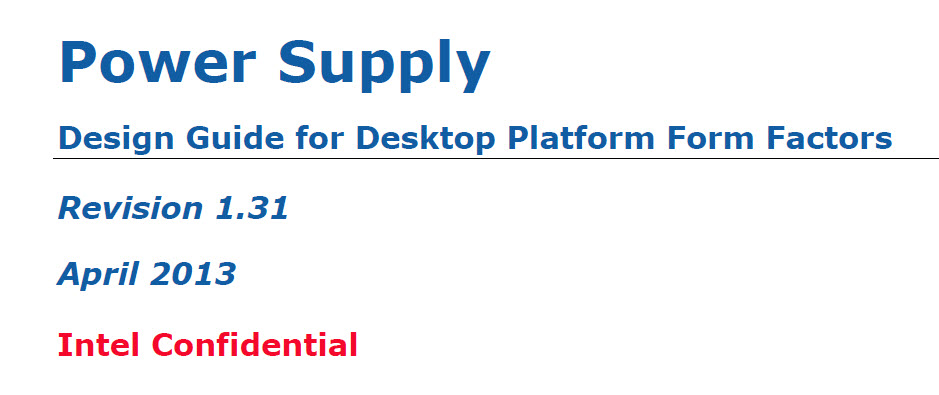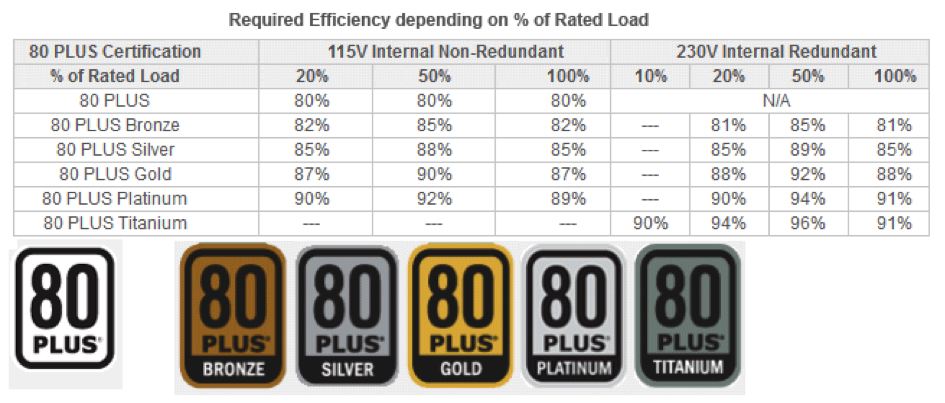PSUs 101: A Detailed Look Into Power Supplies
The objective of this article is to provide detailed information about the most crucial part of a personal computer (PC) system, its power supply unit. Follow us on this journey into PSU territory and we promise that you will gain valuable knowledge.
ATX, EPS, And 80 PLUS Specifications
In PSUs, certain standards are widely accepted by almost all manufacturers. In the following sections, we are going to make a brief reference to three of the most recognized and up-to-date specifications: ATX, EPS and 80 PLUS.
ATX Specification
Advanced Technology Extended, known as ATX, is a motherboard form-factor specification developed by Intel in 1995. In general, it gives some guidelines on computer cases, motherboards and PSUs design. The first ATX specification was released in late 1995 and defined three types of power connectors:
- Four-pin Molex
- Four-pin FDD connector
- 20-pin Molex motherboard connector
This specification stated that most of a PSU's power should be provided on the +5V and +3.3V rails. This is because in those early times, these two rails powered all electronic components, and +12V rails were used only for fans and motors of peripheral devices. This original ATX specification remained almost unchanged until the year 2000.
All Intel Power Supply Design Guides for Desktop Platform Form Factors use the Revision naming scheme. However, some of us and most companies use the ATX naming scheme. For example, ATX 2.31 is in essence Revision 1.1, while ATX 2.4 is Revision 1.31. More precisely, an Intel Power Supply Design Guide revision includes the ATX guidelines. These refer mostly to form factor matters like dimensions and PSU design, and in some cases they also include specific guidelines about the fan that should be used in a form factor. The rest of the revision refers to more important matters, which have to do with the PSU's performance, efficiency, environmental safety, reliability and so on.
From the year 2000 to today, many revisions were released, with ATX 2.4 (Revision 1.31), released in April 2013, being the latest. The main difference between ATX 2.4 and the previous ATX version (Revision 1.30) is the minimum efficiency recommendations on the 5VSB rail, which actually became less tight. This is probably the first time that we saw a newer specification offering looser requirements, especially in an efficiency-related matter. While the rev. 1.30 spec recommended higher than 69 percent efficiency at 5VSB with 2.75W load on this rail, the newer spec recommends more than 55 percent efficiency with the same load. To be more exact, the rev. 1.30 spec took into account the requirements of the 2013 ErP Lot 6 and 2014 and 2016 ErP Lot 26 requirements directives, while the newer 1.31 follows the guidelines of the 2013 ErP Lot 6 and 2014 ErP Lot 3 directives, omitting the ErP Lot 26 directives. There is also a slight change in rise time. In the new ATX spec, the rise time waveform should be a straight line between 10 and 95 percent of its route, while in the previous specification, the range was 10 to 90 percent. A minimum loading condition for the second +12V rail was also added as a requirement, which in the 1.30 spec wasn't required but only recommended. Finally, the CFX12V, LFX12V, ATX12V, SFX12V, TFX12V and Flex ATX guidelines were updated in ATX 2.4.
EPS Specification
Entry-Level Power Supply Specification (EPS), which is a derivative of the ATX specification, was released for high-end PCs and entry-level servers. It was developed and released by the Server System Infrastructure forum. In order for a PSU to meet the EPS specification, it must have a 24-pin motherboard connector and an EPS (eight-pin) connector. It must also have one four-pin 12V connector if its capacity is 700 to 800W, or two four-pin 12V connectors for capacities of over 850W. The latest EPS specification is 2.92 (PDF available here).
80 PLUS Specification
80 PLUS represents an organization that certifies PSUs that have over 80 percent efficiency at 10, 20, 50 and 100 percent of their maximum rated load, and a power factor of 0.9 or greater at 100 percent load. For Bronze, Silver and Gold certifications, the power factor must be 0.9 or greater on all three load levels. Additionally, the newest Platinum level requires 0.95 or better power factor for servers.
Get Tom's Hardware's best news and in-depth reviews, straight to your inbox.
The first market-ready PSU was created in February 2005 by Seasonic. At first, the only certification level was 80 PLUS, but in the first quarter of 2008, the standards were revised, and Bronze, Silver and Gold efficiency-level certifications were added. The two latest efficiency level certifications, Platinum and Titanium, were added in 2010 and 2011, respectively. We look forward to seeing what the name of the next certification level will be, if there is one. The Titanium level is already pushing contemporary designs to their limits, and we believe that only with advanced, fully digital PSUs can efficiency levels go higher.
We must stress here that 80 PLUS initially certified non-redundant PSUs for desktop use at 115VAC, and 230VAC was used only for redundant PSUs (used in servers and data centers). This changed in April 2014, and 80 PLUS added certifications with 230V input. Since increased input voltage has a positive effect on efficiency (an increase of 1 to 1.5 percent compared to 115V), the 80 PLUS 230V requirements are stricter than the 115V ones. Below, you will find two tables listing all aforementioned efficiency certification levels.
Current page: ATX, EPS, And 80 PLUS Specifications
Prev Page Monitoring Integrated Circuits Next Page PSU Resources
Aris Mpitziopoulos is a contributing editor at Tom's Hardware, covering PSUs.

